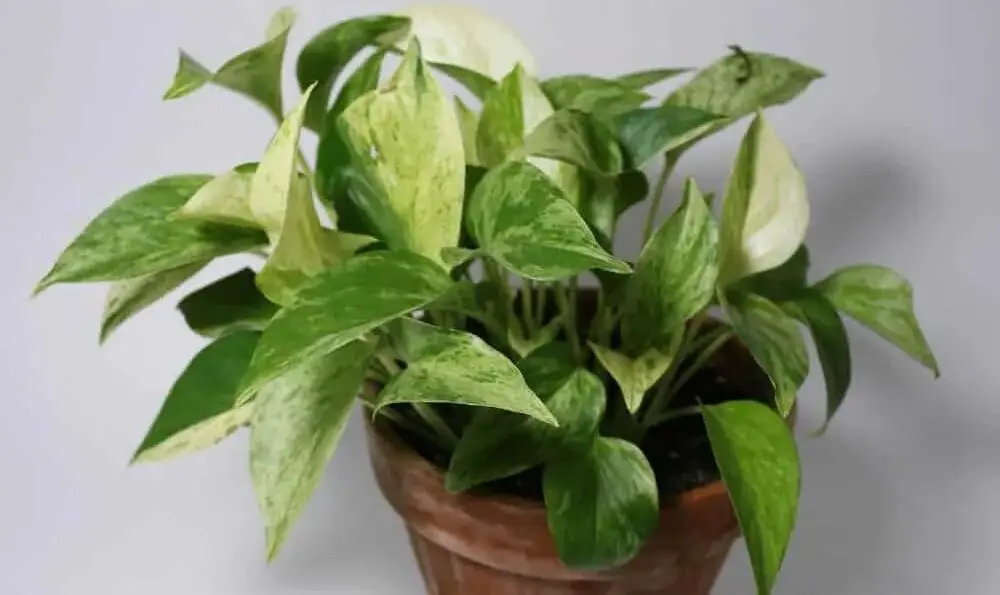Do pothos need drainage? Absolutely! Proper drainage is crucial for the health and well-being of your pothos plant. Without it, excess water can accumulate in the soil, leading to root rot and other issues that can harm your beloved green companion. But fear not, there is a simple solution to ensure your pothos thrives.
By providing appropriate drainage, you can prevent waterlogged soil and allow your pothos to flourish in all its glory. So, let’s dive into the world of pothos and discover the importance of drainage for these beautiful plants.
Essential: Do Pothos Need Drainage For Optimal Growth?
Pothos, also known as Devil’s Ivy, is a popular and low-maintenance houseplant that many people love to have in their homes. One of the critical factors to consider when caring for any plant is proper drainage. Drainage plays a crucial role in maintaining the health and overall well-being of your plants.
In this article, we will explore whether pothos plants require drainage, the reasons behind it, and how to provide adequate drainage for optimal growth.

Live Mini Succulent Plants, Low Maintenance, Exceptional Colors & Textures – Wedding and Party
Understanding the Importance of Drainage
Before we dive into the specifics of whether pothos plants need drainage, it’s essential to understand why proper drainage is crucial for any plant.
Drainage refers to the ability of excess water to escape from the container or soil. It prevents waterlogging, which can lead to root rot and other plant diseases. Here are a few reasons why drainage is essential:
- Prevents water accumulation:
Without proper drainage, excess water can accumulate around the roots, suffocating them and leading to root rot.
- Regulates oxygen levels:
Adequate drainage allows oxygen to reach the roots, promoting healthy growth.
- Prevents nutrient imbalance:
Excessive water retention can cause essential nutrients to leach away, depriving the plant of essential nourishment.
- Discourages pests and diseases:
Stagnant water can attract pests and create a favorable environment for the growth of fungi and bacteria.

Succulent-Like Houseplant in Cute Decor Planter, Room Décor, Unique Office Desk Décor, Birthday, Tabletop Size
Do Pothos Plants Require Drainage?
Pothos plants are known for their adaptability and resilience, making them popular choices for both beginners and experienced plant enthusiasts. While they can tolerate a variety of conditions, proper drainage is still crucial for their overall health and longevity.
In their natural habitat, pothos plants grow as epiphytes, meaning they attach themselves to other plants or objects and derive nutrients and water from the air and rain. This adaptation allows them to survive in a variety of conditions, including low light and low humidity. However, when grown indoors in containers, they require a slightly different approach.
While pothos can tolerate occasional overwatering, prolonged exposure to waterlogged conditions can damage their delicate root systems. Therefore, it is essential to provide proper drainage to prevent water accumulation and ensure the plant’s health.

Plant 3 Feet Artificial Majestic Palm Faux Ravenea Rivularis in Pot for Indoor Outdoor Home Office Store, Great Housewarming Gift
How to Provide Adequate Drainage for Pothos
Now that we understand the importance of drainage for pothos plants, let’s explore some practical ways to provide adequate drainage for optimal growth:
Choosing the Right Pot
Selecting the right pot is the first step in ensuring proper drainage for your pothos plant. Here are a few factors to consider when choosing a pot:
- Size:
Choose a pot that is slightly larger than the current root ball of your pothos, allowing room for growth.
- Material:
Opt for pots made from porous materials like terracotta or clay. These materials allow excess water to evaporate more efficiently.
- Drainage holes:
Ensure the pot has adequate drainage holes at the bottom to allow water to escape.
Using a Well-Draining Potting Mix
Using a well-draining potting mix is vital to maintain proper moisture levels and prevent waterlogging. Here’s what you can do:
- Choose a high-quality potting mix specifically formulated for indoor plants.
- Add perlite, vermiculite, or coarse sand to the potting mix to improve drainage.
- Avoid heavy soils that tend to retain water, as these can lead to root rot.
Proper Watering Techniques
Watering is a crucial aspect of plant care, and it directly affects the drainage requirements of your pothos. Here are some tips for proper watering:
- Allow the top inch or so of the soil to dry out before watering again.
- Avoid overwatering, as this can lead to waterlogged conditions.
- Water the plant thoroughly but ensure any excess water drains out from the pot.
- Empty the saucer beneath the pot to prevent the plant from sitting in standing water.
Read More: About How To Make A Terrarium With Air Plants
Monitoring and Adjusting
Regularly monitor your pothos plant for signs of overwatering or poor drainage. Here’s what to look out for:
- Yellowing or wilting leaves can indicate overwatering or waterlogged conditions.
- Foul smell or mushy roots are signs of root rot.
- Slow growth or lack of new growth may indicate poor drainage.
If you notice any of these signs, take prompt action by adjusting your watering routine and checking the plant’s drainage setup. It may be necessary to repot the plant with fresh, well-draining soil to restore its health.
Proper drainage is essential for the health and well-being of pothos plants. While these plants are adaptable, they still require adequate drainage to prevent root rot and other water-related issues.
By choosing the right pot, using a well-draining potting mix, watering appropriately, and monitoring your plant’s condition, you can ensure a healthy and thriving pothos plant in your home.

5 Piece, All in One Rail Hook Kit and Tool Organizer, Heavy Duty for Wall/Shed/Garden,Black
Frequently Asked Questions (FAQs)
Pothos plants do not necessarily require drainage in their pots. However, proper drainage is essential to prevent waterlogged soil, which can lead to root rot. It is recommended to use pots with drainage holes or add a layer of gravel at the bottom of the pot to ensure excess water can flow out.
While it is possible to use pots without drainage holes for pothos, it is generally not recommended. Without proper drainage, excess water can accumulate and cause root rot. If you choose to use pots without drainage, make sure to carefully monitor watering and ensure the soil doesn’t become oversaturated.
The frequency of watering pothos plants depends on various factors such as the environment, temperature, and humidity levels. As a general guideline, it is recommended to water your pothos when the top inch of soil feels dry. Overwatering should be avoided as it can lead to root rot.
Pothos plants thrive in well-draining soil that retains some moisture. A good potting mix for pothos consists of a combination of peat moss, perlite, and vermiculite. These components provide proper moisture retention while allowing excess water to drain away.
To enhance drainage in a pothos plant’s pot, you can add a layer of gravel or small rocks at the bottom. This layer helps prevent water from saturating the soil at the bottom of the pot. Additionally, using a pot with drainage holes is crucial for optimal drainage.
Overwatering a pothos plant can cause the leaves to turn yellow or wilt. The soil may feel overly damp, and there may be an unpleasant odor emanating from the pot. If you suspect overwatering, allow the soil to dry out before watering again and adjust your watering routine accordingly.
Using a saucer or tray under the pothos pot to catch excess water is suitable as long as it is emptied promptly. Leaving the pot sitting in standing water can lead to root rot. Make sure to discard the collected water after watering or allow the pot to drain completely before placing it back on the saucer.
Misting the leaves of a pothos plant can be beneficial to increase humidity, especially in dry environments. However, it is not necessary for the overall health of the plant. If you choose to mist, do so sparingly to avoid excessive moisture on the leaves, which can encourage fungal diseases.

Secure Latching Buckles, Pearl
Read More: About How To Prevent Mold In Terrariums
Final Thoughts
Pothos plants, also known as Devil’s Ivy, are low-maintenance and adaptable. When it comes to drainage, providing adequate drainage for your pothos is crucial. Pothos plants prefer well-draining soil to prevent waterlogged roots, which can lead to root rot. This can be achieved by using a pot with drainage holes and a well-draining potting mix.
Without proper drainage, excess water can accumulate, potentially suffocating the roots and causing the plant to decline. Therefore, it is essential to ensure that your pothos has proper drainage to thrive and stay healthy.
Auto Amazon Links: No products found.
Perfect Plants Christmas Tree Saver 8oz. | Easy Use Xmas Tree Preserver Food | Have Healthy Green Christmas Trees All Holiday Season
$7.99 (as of December 25, 2025 06:40 GMT +00:00 - More info- Product prices and availability are accurate as of the date/time indicated and are subject to change. Any price and availability information displayed on [relevant Amazon Site(s), as applicable] at the time of purchase will apply to the purchase of this product.
FirEver Pure Christmas Tree Food | Preserver Additive & Season Extender for Live Xmas Trees | Keep It Green, Reduce Needle-Drop | Miracle Freshness (8 oz)
$9.16 (as of December 25, 2025 06:40 GMT +00:00 - More info- Product prices and availability are accurate as of the date/time indicated and are subject to change. Any price and availability information displayed on [relevant Amazon Site(s), as applicable] at the time of purchase will apply to the purchase of this product.
Wilt-Pruf® Christmas Tree/Cutting Preserver Spray |Preserves Christmas Trees, Wreaths, Garlands, Cuttings and Carved Pumpkins | Reduces Needle Drop | Keeps Cut Trees Fresh Longer | Natural (32 oz)
$21.99 (as of December 25, 2025 06:40 GMT +00:00 - More info- Product prices and availability are accurate as of the date/time indicated and are subject to change. Any price and availability information displayed on [relevant Amazon Site(s), as applicable] at the time of purchase will apply to the purchase of this product.
Transmission Funnel - 3'' Wide 23'' Long Funnel with Hose – Flexible, Reusable, No Leak Design Featuring Elastic Long Hose | Long Funnel for Oil, Gas, Coolant, Automotive and Garage Applications
$7.95 (as of December 25, 2025 06:40 GMT +00:00 - More info- Product prices and availability are accurate as of the date/time indicated and are subject to change. Any price and availability information displayed on [relevant Amazon Site(s), as applicable] at the time of purchase will apply to the purchase of this product.
Rocky Mountain Goods Christmas Tree Food - 8 oz Tree Preservative - Reduce Needle Drop - Greener Scent - Fir, Pine, Spruce Trees - Extend Tree Life
$9.95 (as of December 25, 2025 06:40 GMT +00:00 - More info- Product prices and availability are accurate as of the date/time indicated and are subject to change. Any price and availability information displayed on [relevant Amazon Site(s), as applicable] at the time of purchase will apply to the purchase of this product.
Muddy Mat® | Super Absorbent Door Mat Indoor, Microfiber Quick Dry Chenille Entryway Rug, Non-Slip Front Door Mat, Indoor Mats for Entryway, Machine Washable Pet Rug, Grey 30"x19"
$24.95 (as of December 25, 2025 12:41 GMT +00:00 - More info- Product prices and availability are accurate as of the date/time indicated and are subject to change. Any price and availability information displayed on [relevant Amazon Site(s), as applicable] at the time of purchase will apply to the purchase of this product.
OLANLY Dog Door Mat for Muddy Paws 30x20, Absorbs Moisture and Dirt, Absorbent Non-Slip Washable Doormat, Quick Dry Chenille Mud Mat for Dogs, Entry Indoor Entryway Carpet for Inside Floor, Grey
$9.99 (as of December 25, 2025 12:41 GMT +00:00 - More info- Product prices and availability are accurate as of the date/time indicated and are subject to change. Any price and availability information displayed on [relevant Amazon Site(s), as applicable] at the time of purchase will apply to the purchase of this product.
Zevo Flying Insect Trap Official Refill Cartridges - Fits Both Zevo Trap & MAX Indoor Fly Trap - Authentic Trap+Lock Technology to Catch Gnats, House & Fruit Flys (4 Official Refill Cartridges)
$14.97 (as of December 25, 2025 12:41 GMT +00:00 - More info- Product prices and availability are accurate as of the date/time indicated and are subject to change. Any price and availability information displayed on [relevant Amazon Site(s), as applicable] at the time of purchase will apply to the purchase of this product.
TERRO Ant Killer Bait Stations T300B - Liquid Bait to Eliminate Ants - Bait System - 12 Count Stations for Effective Indoor Ant Control
$10.88 (as of December 25, 2025 12:41 GMT +00:00 - More info- Product prices and availability are accurate as of the date/time indicated and are subject to change. Any price and availability information displayed on [relevant Amazon Site(s), as applicable] at the time of purchase will apply to the purchase of this product.
ThermoPro TP50 Digital Hygrometer Indoor Thermometer Room Thermometer and Humidity Gauge with Temperature Humidity Monitor
$11.99 (as of December 25, 2025 12:41 GMT +00:00 - More info- Product prices and availability are accurate as of the date/time indicated and are subject to change. Any price and availability information displayed on [relevant Amazon Site(s), as applicable] at the time of purchase will apply to the purchase of this product.











